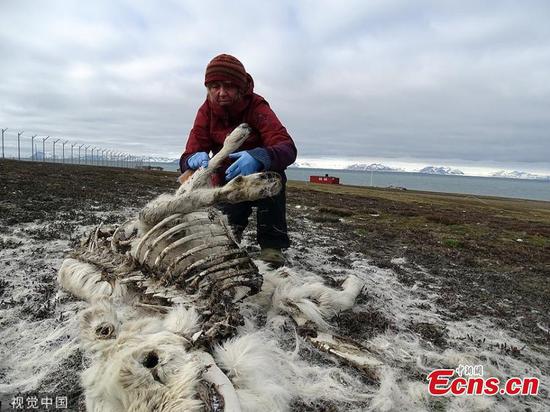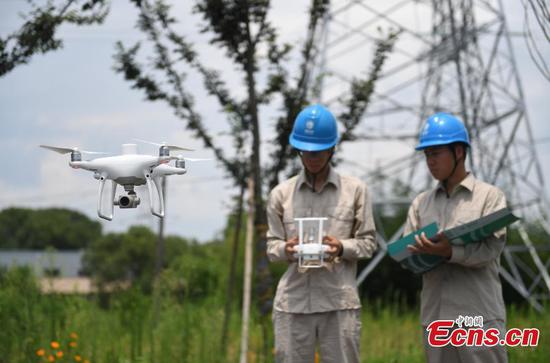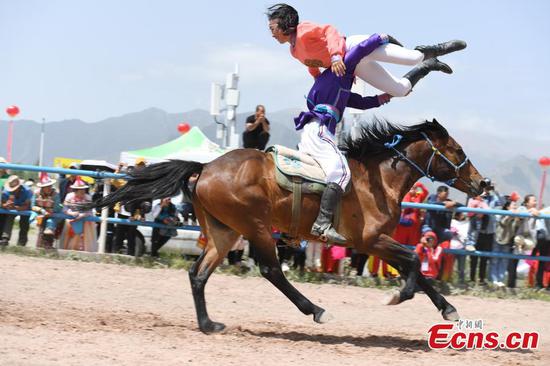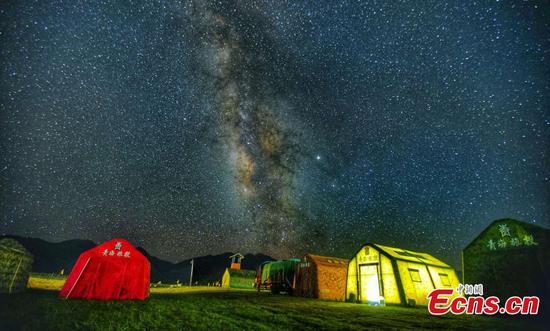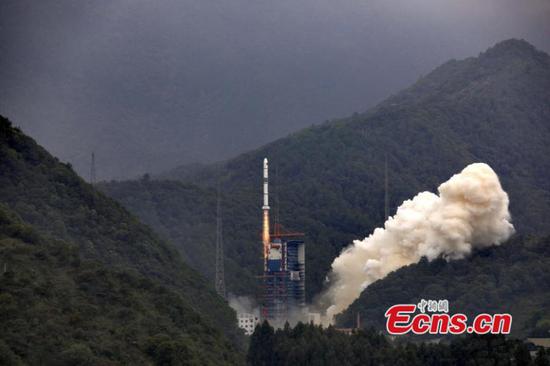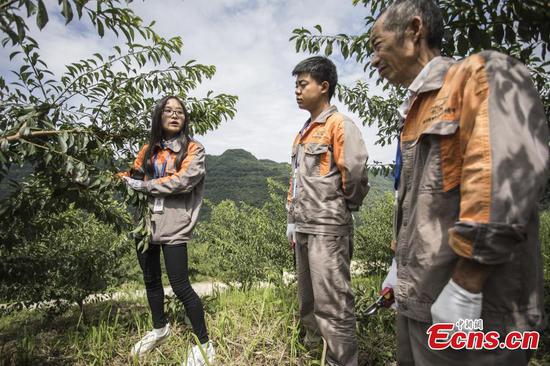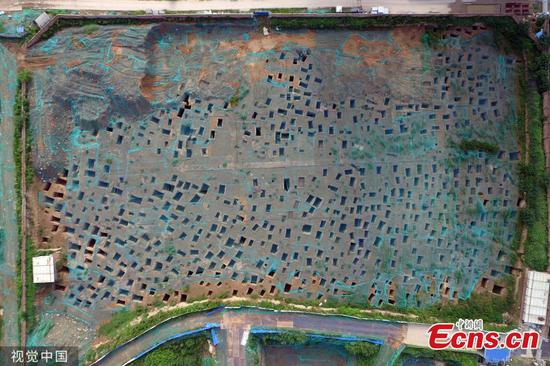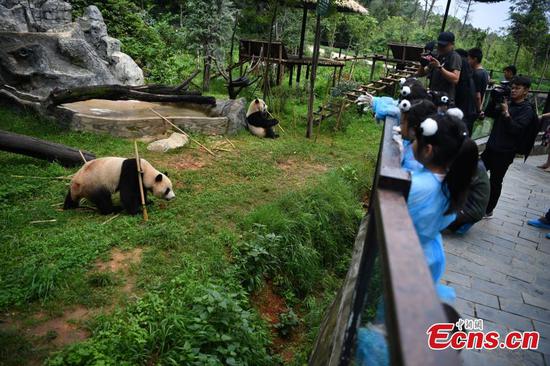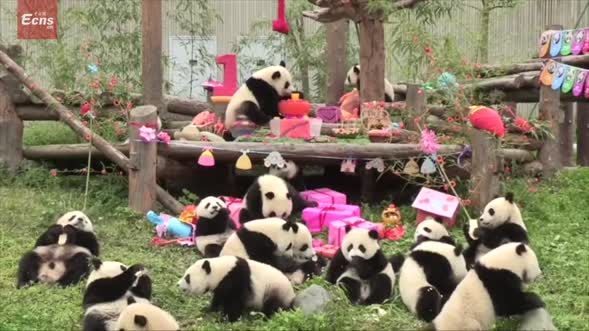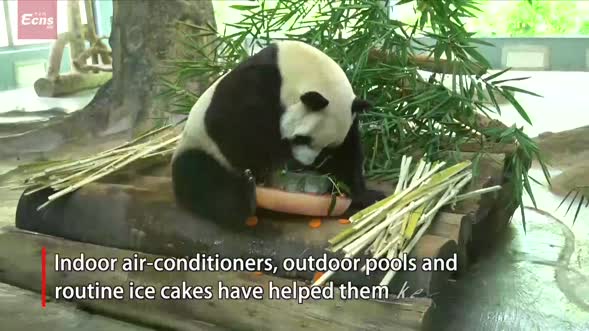
Siberian tigers rest at Hengdaohezi, a major breeding center for big cats in Mudanjiang, Heilongjiang Province, in April. (Photo/Xinhua)
After nearly 20 years of efforts, China has built a monitoring network for endangered Siberian tigers and Amur leopards, covering more than 12,000 square kilometers in the provinces of Jilin and Heilongjiang, an expert said on Sunday.
With cutting-edge technologies such as artificial intelligence and big data, more than 4,000 infrared camera video clips of tigers and more than 600 clips of leopards were recorded by a team led by Jiang Guangshun, deputy director of the Feline Research Center of the Natural Forestry and Grassland Administration.
"By comparing the data of tigers and leopards of China and Russia from 2013 to 2015, we have confirmed that 17 tigers and 42 leopards are shared populations of both China and Russia," Jiang said at the International Forum on Tiger and Leopard Transboundary Conservation which kicked off on Sunday in Harbin, Heilongjiang province.
"The ecology has greatly improved since the natural forest protection project started in 1998, and all commercial logging has been stopped, which helped to protect tigers and leopards.
"However, we still face great challenges," he said. "The distribution pattern of the two species suggests that the protection of the tiger and leopard requires the establishment of a network of protected sites, the construction of international and domestic corridors and the formation of a permeable landscape. It needs attention and support from all over the world.
"Military fences, transportation facilities and farmland in the habitats have a strong impact on tigers' free migration in different areas in China and cross-border areas between China and Russia. Living in small and isolated areas may cause more inbreeding, which can be a factor in their decline in immunity," Jiang added.
"Therefore, the construction of an ecological corridor, including the improvement of habitat quality, is essential."
Jiang said the project can ensure the security of the environment of the cross-border areas and may become a model for the transnational cooperation for the protection of endangered species.
Focusing on big cats around the world, especially tiger and leopard populations, the two-day event attracted more than 300 representatives from 19 countries, including Nepal, Russia, Vietnam and 10 international organizations, including the World Wildlife Fund.
"Tigers and leopards are important symbols of a healthy and stable natural ecosystem and have high conservation value," said Zhang Jianlong, head of the National Forestry and Grassland Administration. "The protection of tigers and leopards in the world has achieved remarkable results through the joint efforts of all parties, but we still face prominent problems such as insufficient and dispersive habitat areas."
Representatives discussed monitoring technology, restoration of populations and habitat areas, landscape resource allocation in protected areas, conflict resolution and other related technical and policy issues.
A consensus on tiger and leopard transboundary conservation reached by all the representatives was published at the forum, pointing out that sustained joint efforts are still necessary to achieve the recovery of tiger and leopard populations in transboundary areas.
Furthermore, the establishment of an international exchange and cooperation mechanism for crossborder protection of tigers and leopards is expected to see important progress in the future.









